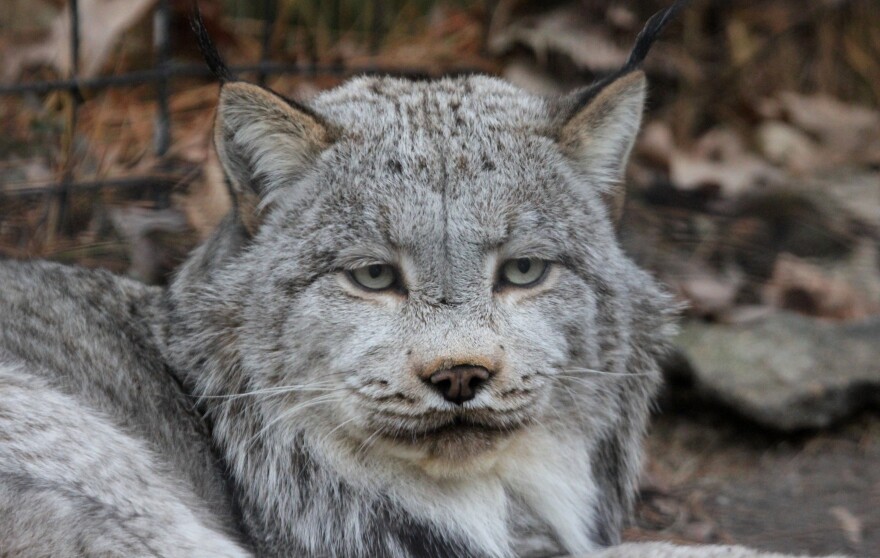New Bedford’s Buttonwood Park Zoo lost a furry face last month when a black bear succumbed to age-related illness. The nation’s 12th-oldest zoo has a significant population of geriatric animals, each with very particular needs. Today, we look at the ways humans provide for older wildlife in captivity.
Our story starts with Amy, an American black bear, who died not too long ago at the age of 21. Her kidney disease had been manageable for five months, but the signs of advancing illness began to pile up.
“It had gotten to a point where we felt that she was not thriving,” said Keith Lovett, director of the zoo. “And we were worried that she was given to suffer, so we made the humane decision to euthanize.”
Buttonwood is a small urban zoo in New Bedford where Amy lived with two companions, Toby and Ursula. They had been orphaned in different places and arrived at the zoo in 2000, all yearlings — tall and lanky before the fullness of adulthood.
“They can live into the 30s, but typically the lifespan of a bear in the zoo is going to be [from] their late teens into their mid 20s,” Lovett said.
Zoos are careful to communicate typical life expectancy because not every individual can reach a species’ maximum lifespan.

In addition to the bears, Buttonwood Park Zoo houses two 21-year-old bobcats, Salsa and Sprite; a bison who is over 20, Sarah; and a lynx, Calgary, who is the oldest lynx in a United States zoo, according to Lovett.
“And probably our most famous older animals at the zoo, of course, are Ruth and Emily,” he said. “Ruth is the third-oldest elephant in the country at 61 years of age, and Emily is a young 55. So we do have a lot geriatric animals at the zoo.”
With zero predation and the advantages of modern medicine, many zoos are flush with elders of the furred, feathered and finned — and caring for them presents its own set of problems to solve.
Even knowing when they’re not well can be a challenge.
“Wild animals are very good at hiding things,” said Shara Crook, an employee at Buttonwood for 34 years. A former keeper turned assistant director, she said the training of animals to accept diagnostic screenings has come a long way.
“When I first started, you know, animals had to really be manually restrained, which isn’t ideal, especially for an older animal,” she said. “It really is a stressful type of situation.”
Keepers use operant conditioning — rewarding animals to perform certain behaviors, not for show, but to position themselves for exams or injections. Seals, for example, learn to lie on their backs to receive abdominal ultrasounds.
And Lovett said sedating or anesthetizing a geriatric animal is very risky.
Zoos also modify diets and habitats, as they did for the bear named Ursula, who has spinal degeneration and needed ramps to step up.
Ruth, the elder of the two Asian elephants, is dealing with aging teeth.
“And she has trouble with chopping food down into small bits,” Lovett said. “So we need to feed her smaller pieces of food. We need to grind her hay, chop her hay, because if not, she would have trouble digesting these types of food.”
Meredith Whitney, with the International Fund for Animal Welfare and a former zookeeper herself, said one of the ethical issues involved in caring for older wildlife is when to consider euthanasia. Professionals in the field are trying to make end-of-life decisions less subjective.
Subjectivity, Whitney said, can lead to a rushed decision.
“When you have a facility that is really about public experience, there can be pressure to remove animals from exhibit if they aren't mobile, if they look terrible because they're not able to clean themselves, perhaps,” she said. “But they might still have a pretty decent quality of life.”

The other extreme can happen, too, when the emotional attachments of people to animals stop them from making the hard choice when the animal is suffering.
“Animals belong in the wild; they just do,” she said. “And so, when we take them into captivity for whatever reason, we incur a duty to them to make sure that they have the best quality of life possible in this compromised, captive setting, from the moment they come into captivity until the moment they die.”
For Shara Crook, the longtime Buttonwood zoo employee, an emotional goodbye is coming.She has a soft spot for Yellow, a harbor seal she has known since 1986. Yellow is in her 30s, nearing the end of her life.
“For me personally, it's going to be a very difficult day when, you know, when we finally lose Yellow,” she said.
Right around the corner, though, new life springs up. In the rainforest exhibit, South American primate species have given birth to several babies in the last few years — the latest, in January, a Bolivian gray titi monkey.








